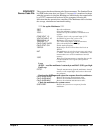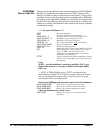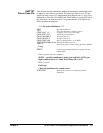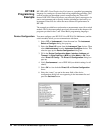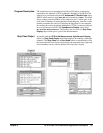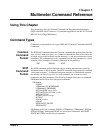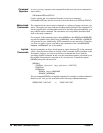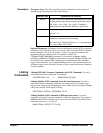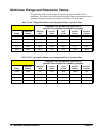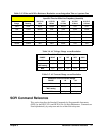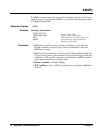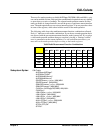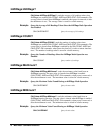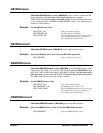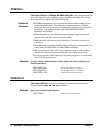
Multimeter Command Reference 69Chapter 3
Parameters Parameter Types. The following table contains explanations and examples of
parameter types you might see later in this chapter.
Optional Parameters. Parameters shown within square brackets ([]) are optional
parameters. (Note that the brackets are not part of the command; do not send them
to the instrument.) If you do not specify a value for an optional parameter, the
instrument chooses a default value. For example, consider the
TRIGger:COUNt? [MIN|MAX] command. If you send the command without
specifying a
MINimum or MAXimum parameter, the present TRIGger:COUNt value
is returned. If you send the
MIN parameter, the command returns the minimum
trigger count allowable. If you send the
MAX parameter, the command returns the
maximum trigger count allowable. Be sure to place a space between the command
and the parameter.
Linking
Commands
Linking IEEE 488.2 Common Commands with SCPI Commands. Use only a
semicolon between the commands. For example:
*RST;RES:NPLC 100 or SAMP:COUNt 25;*WAI
Linking Multiple SCPI Commands From the Same Subsystem. Use only a
semicolon between commands within the same subsystem. For example, to set
trigger count, trigger delay and the trigger source which are all set using the
TRIGger
subsystem, send the following SCPI string:
TRIG:COUNt 10;DELay .05;SOURce TTLT4
Linking Multiple SCPI Commands of Different Subsystems. Use both a
semicolon and a colon between commands of different subsystems. For example, a
SAMPle and OUTPut command can be sent in the same SCPI string linked with a
semicolon and colon (;:) as follows:
SAMP:COUNt 10;:OUTP:TTLT4 ON
Parameter Type Explanations and Examples
Numeric Accepts all commonly used decimal representations of number
including optional signs, decimal points, and scientific notation.
123, 123E2, -123, -1.23E2, .123, 1.23E-2, 1.23000E-01.
Special cases include MINimum, MAXimum, and DEFault.
Boolean Represents a single binary condition that is either true or false.
ON, OFF, 1, 0
Discrete Selects from a finite number of values. These parameters use
mnemonics to represent each valid setting.
An example is the TRIGger:SOURce <source> command where
source can be BUS, EXT, or IMM.



